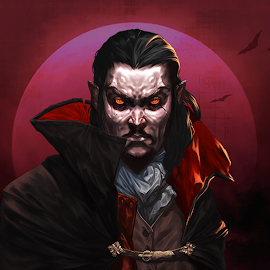VAMPIRE LORE : THE GOOD, THE BAD AND THE FANGTASTIC!
The genesis of vampire lore can be found in ancient civilizations such as Mesopotamia and Greece, where tales of blood-drinking demons and child-snatching monsters laid the groundwork for subsequent legends. However, it was in Eastern Europe, particularly in Slavic regions, where the concept of the vampire as we know it began to take shape. The Slavic belief in revenants, animated corpses returning from the grave to prey upon the living, provided the foundation for many enduring vampire tropes.
Among the pantheon of vampire lore, certain figures stand out for their historical significance and cultural impact. Vlad the Impaler, though not a vampire himself, served as inspiration for Bram Stoker's iconic character, Dracula, with his reputation for cruelty and his association with impalement. Elizabeth Báthory, the Blood Countess, achieved infamy for her alleged bathing in the blood of virgins, a tale that has cemented her status as a figure of vampiric horror. Additionally, the 1922 film "Nosferatu," despite attempts to suppress it, emerged as a seminal work in vampire cinema, introducing audiences to the iconic figure of Count Orlok.
In modern times, vampires have undergone numerous reinterpretations, reflecting changing societal attitudes and cultural trends. From Anne Rice's brooding and introspective vampires to the romanticized creatures of Stephenie Meyer's "Twilight" series, contemporary portrayals run the gamut from horror to romance. These modern iterations serve as a reflection of our ongoing fascination with themes of immortality, desire, and the supernatural.
Vampire mythology and legend continue to captivate audiences across the globe, transcending time and cultural boundaries. Through the ages, these nocturnal beings have served as potent symbols, tapping into our deepest fears and desires. Whether depicted as monstrous fiends or tragic antiheroes, vampires remain a timeless source of intrigue and fascination, reminding us of the enduring power of myth and legend in shaping the human experience.


Comments
Post a Comment